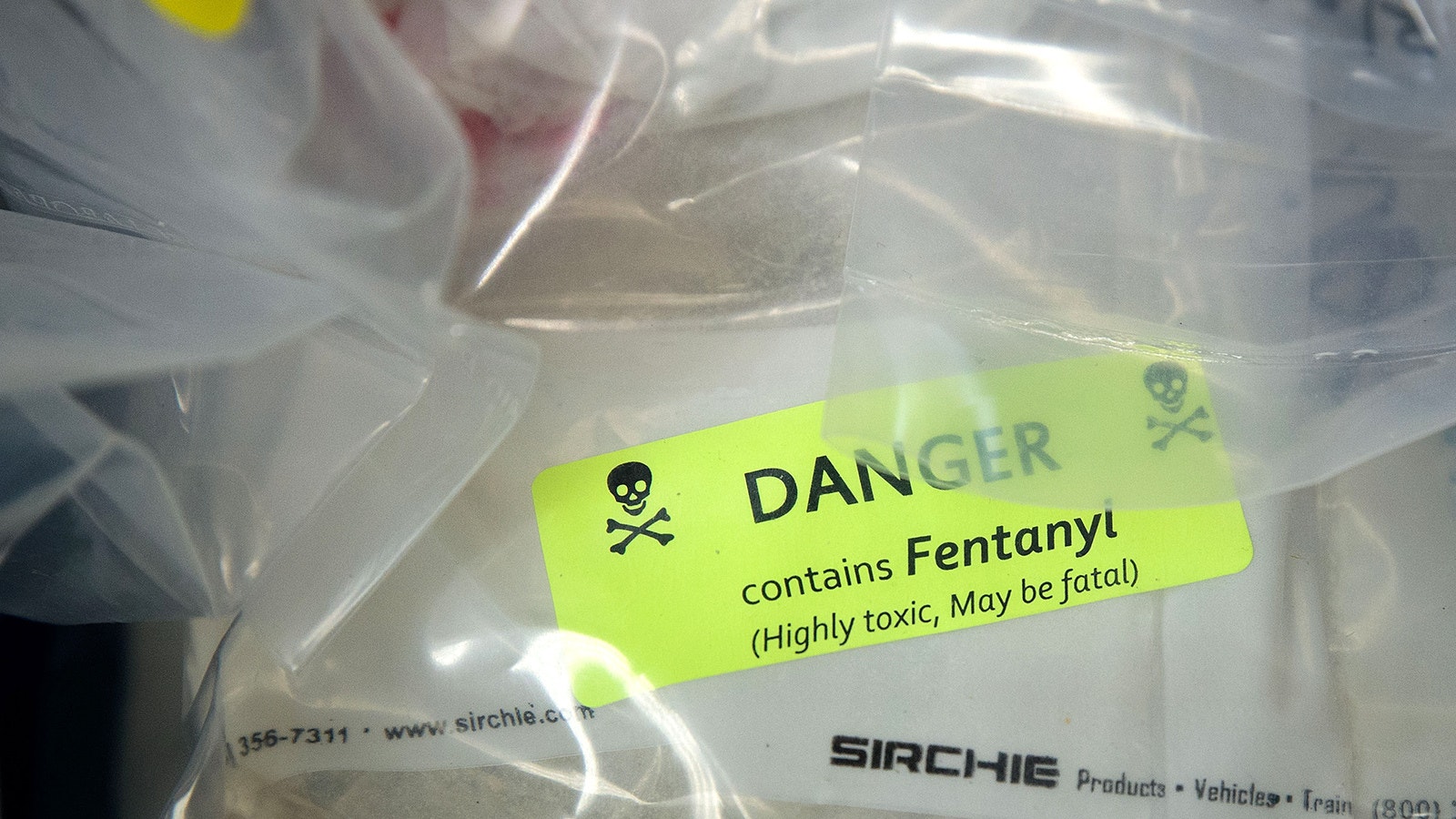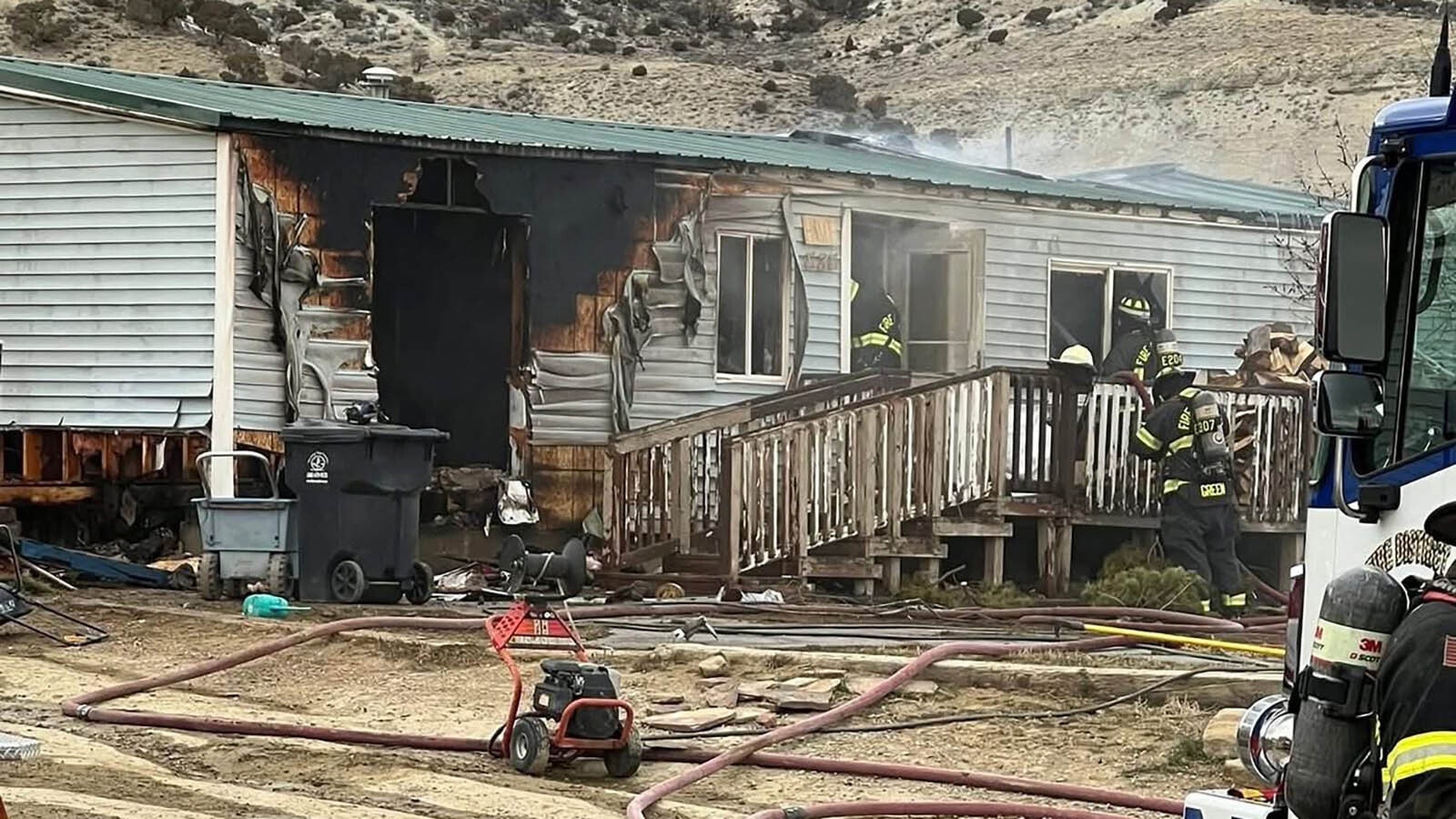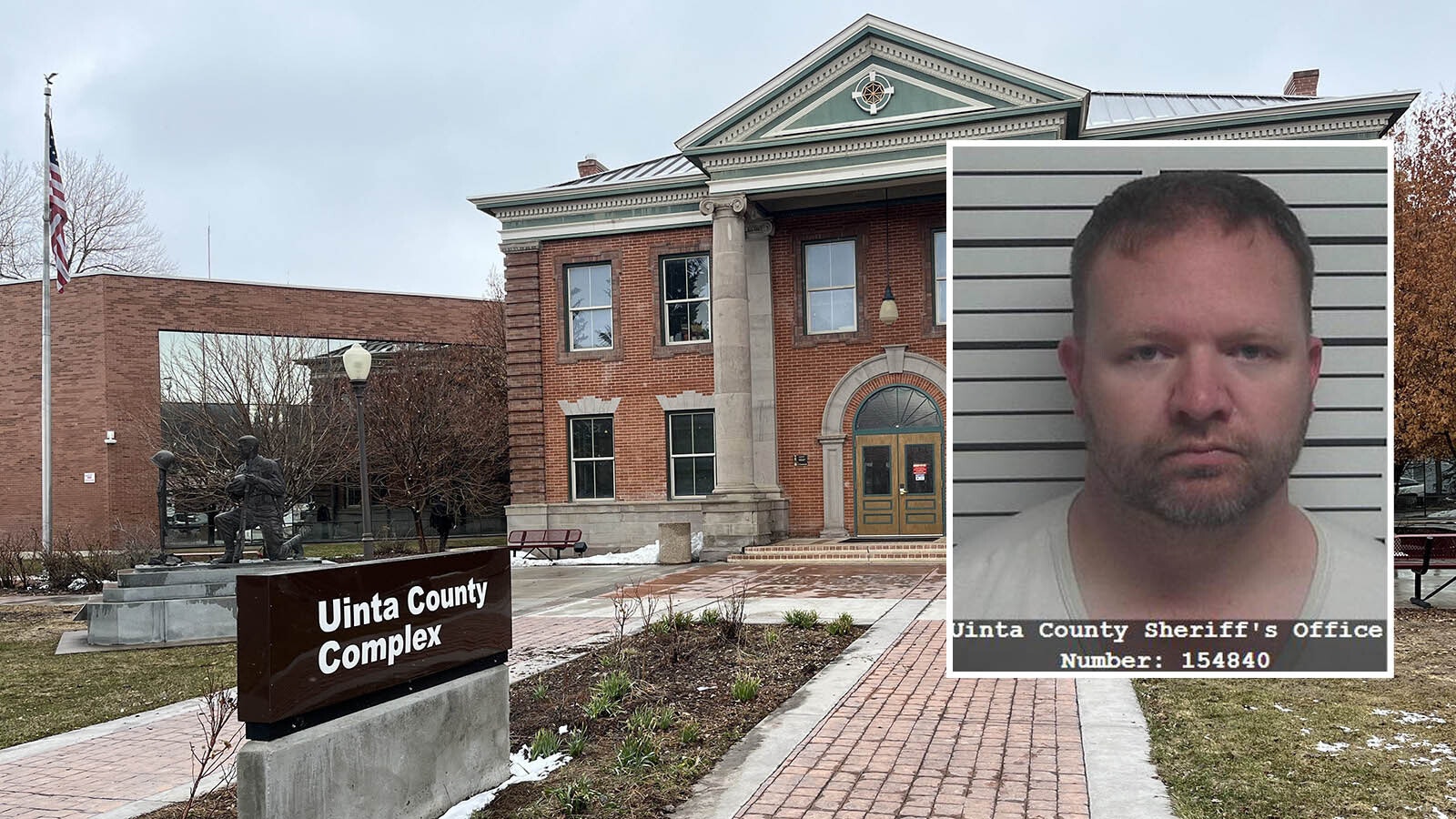A recent bust that yielded more than 9,000 fentanyl pills in Laramie County underscores the battle Wyoming law enforcement agencies the public at large are waging against the highly potent — and highly fatal — drug.
“It’s our No. 1 issue that we’re facing in Laramie County,” Laramie County Sheriff Brian Kozak told Cowboy State Daily at Thursday’s Drug Information Opportunity Symposium at the state Capitol. “It is the cause of all the crime that we’re seeing.”
Kozak said there will be more than 12 indictments that come out of the case, the result of an undercover investigation that also seized many pounds of methamphetamine.
The sheriff said a transition has happened in Wyoming among illegal drug users from meth being the predominant drug seized by law enforcement to fentanyl being the drug of choice.
“Every seizure, traffic stop, whatever the investigation we’re doing, it’s all fentanyl-related,” he said. “A lot of our users who previously using methamphetamine, now they’re using fentanyl, and/or a combination of both.”
Despite the massive size of the recent bust, Kozak said the presence of fentanyl has already returned in his county. He also said that the investigation is still active and more information on that operation will be released soon.
Root Causes
The high number of deaths and overdoses caused by fentanyl over the past decade has ripped across the country and Wyoming.
Casey Patterson, drug intelligence officer for the Wyoming Division of Criminal Investigation, said law enforcement from January through March this year have already seized 57% of the overall dangerous narcotics seized in all of 2022.
“Fentanyl is the No. 1 drug threat for us out in the region right now,” he said. “On a daily basis, we’re losing loved ones, family members, community members. It’s just heartbreaking to see the amount of tragedy that is out there right now.”
Patterson said almost every property crime has a drug-related connection. He mentioned an uptick in catalytic convertor thefts in Cheyenne tied to those supporting an opioid abuse disorder.
Kozak said the root cause of many of the crimes committed in Laramie County is a desire to feed an addiction.
Wyoming Attorney General Bridget Hill said it’s believed that more than half of those who interact with the Wyoming criminal justice system have a substance abuse problem.
“If half of the people interacting with that system are affected by substance abuse, including opioids, that’s how we maybe combat crime a little — talking about the opioid problem, talking about substance abuse,” she said.

Don’t Wait For People To OD
But Hill said it’s not sufficient to focus on solely treating overdoses. She said proactively providing education about the dangers of opioids and seeking help must also happen.
Kozak’s chief deputy, Perry Rockvam, has headed an effort to address addiction in the Laramie County Detention Center. The jail has unveiled a Medicaid-assisted treatment program for inmates. The program would offer recovery options for inmates and then offer connections for them in the community to get a fresh start once released.
“It’s going to be no expense and they can continue treatment,” Kozak said. “Hopefully, we can keep them from committing more crime and keep them out of jail. That’s our goal, and hopefully save lives.”
Rockvam said there is an unprecedented number of people with mental health issues at the Laramie County Detention Center. He said a holistic community effort must take place to combat the opioid crisis.
Rockvam said jails are being forced into becoming de facto mental and public health facilities for their communities, treating several overdoses at the Laramie County jail in the last few months alone. Laramie County leads Wyoming for overdose deaths.
Rockvam came out of retirement this year after eight years to try and make a difference in the local jail and community. He said law enforcement has significantly changed since he retired in 2015.
For one, every deputy in the jail now carries Narcan, a medicine that rapidly reverses an opioid overdose.
“We are not built, the jails were not constructed, to be able to handle this kind of challenge in today’s world,” he said.
The Sheriff’s Office also wants to engage proactive traffic enforcement to get drugs off the streets through traffic stops and add more school resource officers.
“We have to hit it from all different angles,” he said.
Patterson said people who use drugs have a natural interaction with officials in public health and public safety.
“There’s a lot of different ideas and policies that can be implemented that can not only bring down overdose numbers, but … just the cost on the burden on the health care system,” he said.
Whack-A-Mole
Kozak said the harsh reality of drug enforcement is that its roots are much deeper than removing a single group or major dealer.
“The people dealing fentanyl that we just took down and arrested, we know someone’s going to come in right behind them and start dealing again,” he said. “It is a whack-a-mole, but along the process we are saving lives as well.”
That’s why he’s passionate about getting inmates into treatment and recovery rather than relying on their sentences to help them sober up.
The mission of the Office of National Drug Control Policy’s Overdose Response Strategy is to reduce fatal and non-fatal drug overdoses by facilitating collaboration between public health and public safety officers. Patterson is the drug intelligence officer representative for this program and works with public health analyst Hailey Hayden to run Wyoming’s office of the program.
Hayden said the popular perception that law enforcement is stubborn and not open to change is false.
Highly Potent
Colorado resident Andrea Thomas’ daughter Ashley Romero was poisoned and killed by fentanyl at the age of 32 in 2018.
“Nothing will ever be just here, there is not justice,” she told those attending the symposium.
Romero had battled alcohol addiction for quite some time and suffered from pancreatitis as a result. When she didn’t feel like she was properly treated by her medical provider, she sought medication on her own and was provided fentanyl by her boyfriend, who gave her half a pill.
It was enough to kill her.
“It seemed unfathomable to me; how does half a pill kill you?” Thomas questioned.
Now Thomas runs Voices For Awareness, a nonprofit that promotes awareness about counterfeit drugs, illicit fentanyl and self-harm.
Thomas said the leading cause of death among teenagers is fentanyl overdose. She said many young people are taking fentanyl without any knowledge of the inherent, and often fatal, risks involved with the drug. Also, cartels use social media to market and distribute the drug to teens.
She said although massive fentanyl seizures may seem like progress, the dealers just chalk them up to the cost of doing business and sometimes purposely set up drug busts to sneak larger quantities across the border.
Fentantyl is more potent than heroin and around 100 times more potent than morphine. The equivalent of a Sweet ’N Low packet filled with fentanyl would kill 500 people.
Recovering from a fentanyl addiction is exceptionally difficult because of its high potency. Fellow Voices For Awareness member Michael Fiore said the quantity of fentanyl that could fit in a Sweet 'N Low packet would kill 500 people.
At the symposium, there weren't snacks or T-shirts inside the goody bags, but rather Naloxone, another narcotic overdose medicine.
Thomas is an advocate for Naloxone, but she said the only way to stay safe from fentanyl is to not use the opioid. She told Cowboy State Daily that drug cartels are pressing their own fentanyl pills, which can be much more potent than a prescription for fentanyl that someone would receive at a hospital.
“I feel sometimes we give these kids a false sense of security by offering these tools (Naloxone) to them,” she said.
Personal Recovery
Karen Miller, a certified peer specialist at Cheyenne Regional Medical Center, said her drug addiction took root at a young age when given codeine.
The narcotic gave her a sense of tranquility that had evaded her in her everyday life.
“When mom gave that little codeine pill, it felt better than real life,” she said. “I was in this daze, and it was OK with me.”
She has been sober for 17 years, but most recently attempted suicide about three or four years ago. Because of her own experiences, she can relate to the people she works to help.
“Turning that hopeless, helpless, annihilated feeling around,” she said. “That’s true healing.”
She said the longer one’s recovery lasts, the more likely someone is to be exposed to others who die from their addiction.
Although she still has difficult moments in her own life, Miller said she’s thankful to be alive, saying that, “On a day I feel good, it’s like, ‘Wow, thanks God, for waking me up another day.’”
Despite the bleak national opioid statistics, Miller said there should be optimism for the future.
“As disheartening as the statistics are, there’s a lot of people like me who are excited about this,” she said. “Excited about recovery. Just know there’s a bunch of us crazy little people out there who are not wanting anyone else to die.”
Leo Wolfson can be reached at leo@cowboystatedaily.com.





